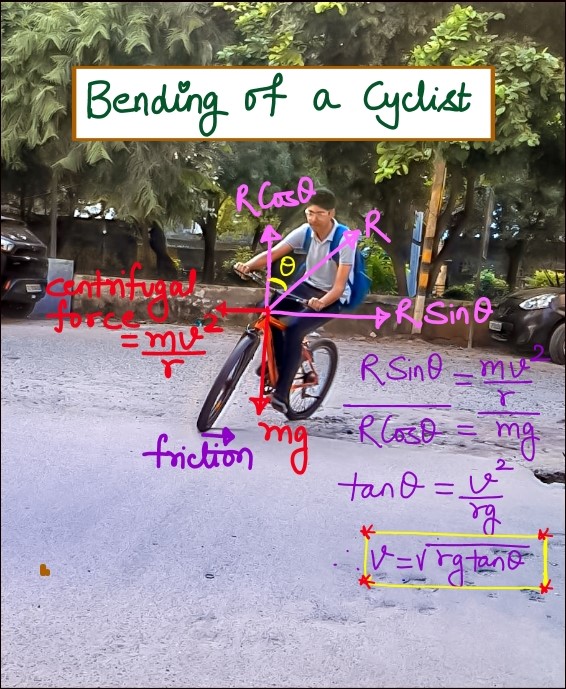
Bending of a cyclist
The bending of a cyclist, also known as leaning or tilting, is a fundamental and intriguing phenomenon in physics that occurs when a cyclist navigates through a turn or curve. This phenomenon is governed by several principles of physics, including Newton’s laws of motion, centripetal acceleration, and the conservation of angular momentum.
When a cyclist approaches a curve, they must lean their body and bicycle inwards towards the center of the turn. This leaning is essential to maintain balance and prevent falling over. The primary reason for this leaning is to counteract the centrifugal force that pushes them outward as they navigate the curve.
Here’s a breakdown of the physics behind the bending of a cyclist:
- Centripetal Force: According to Newton’s first law of motion, an object at rest tends to stay at rest, and an object in motion tends to stay in motion unless acted upon by an external force. In the case of the cyclist, the external force at play is the centripetal force, which acts towards the center of the turn. It is responsible for keeping the cyclist moving in a curved path.
- Centrifugal Force: As the cyclist enters the curve, they experience a sensation of being pushed outward due to their inertia, trying to continue moving in a straight line. This outward force is known as centrifugal force, and it is a result of the cyclist’s velocity and mass. To counteract this force and maintain balance, the cyclist must lean in the opposite direction—towards the inside of the curve.
- Conservation of Angular Momentum: Angular momentum is a property of rotating objects and is conserved unless acted upon by an external torque. As the cyclist leans into the turn, they effectively change the direction of their angular momentum vector while keeping its magnitude constant. This shift in angular momentum helps them steer through the curve without falling.
- Friction: Friction between the tires and the road is another crucial factor in ensuring the cyclist’s stability during a turn. The frictional force provides the necessary centripetal force required to keep the cyclist on the curved path. The cyclist adjusts their speed and the angle of lean to ensure that the frictional force is sufficient to balance the centrifugal force.
The degree of leaning and the speed at which a cyclist can safely navigate a curve depend on several factors, including the radius of the curve, the coefficient of friction between the tires and the road, and the cyclist’s skill and experience. Going too fast or leaning too little can lead to instability, while going too slow or leaning too much can result in an inefficient turn.
In summary, the bending of a cyclist in physics is a fascinating interplay of forces and principles that allow them to safely navigate curves while maintaining balance. It is a perfect example of how physics concepts like centripetal and centrifugal forces, angular momentum, and friction are applied in everyday activities.
#physics #gofacademycoaching #gofacademy #GOF #gofacademydwarka #physicsForJEE








